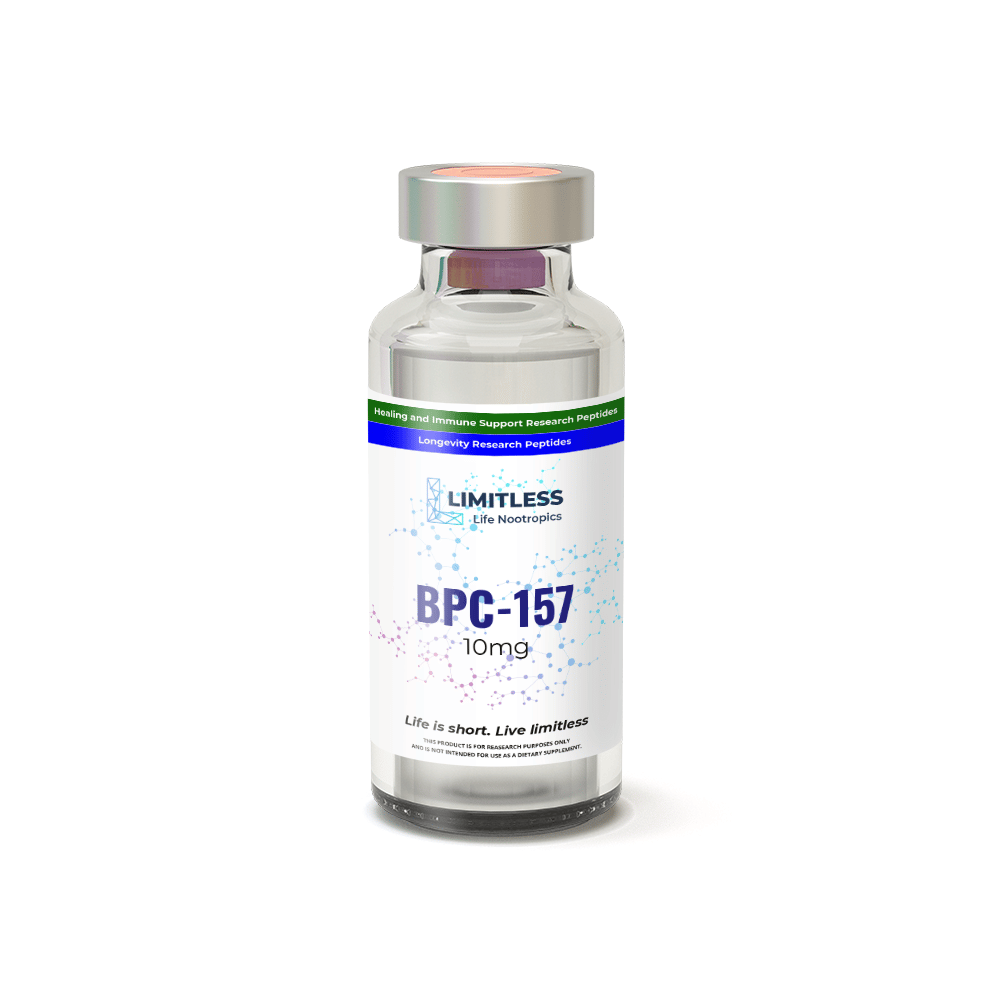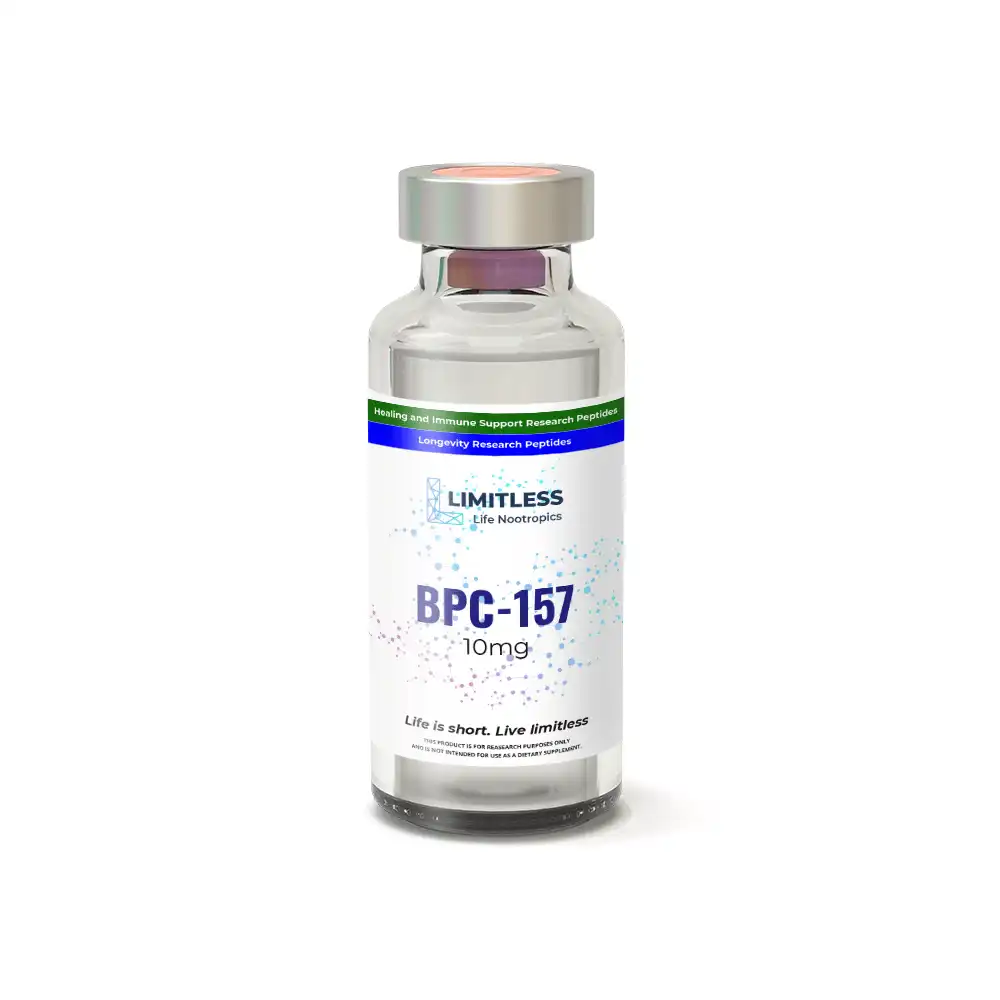
Revolutionize Healing: BPC-157 Peptide Benefits and Applications
Are you curious about BPC-157 Peptide? Did you know that this amazing peptide can help you experience faster recovery times and reduce Inflammation while you are healing, among many other regenerative and healing benefits?
What Is BPC-157 Peptide?
BPC stands for body protective compound, and BPC 157 Peptide is composed of 15 amino acids derived from human gastric juices.
BPC-157 was first identified in 1993 by a team of researchers in Croatia who were investigating the regenerative properties of stomach tissue. They found that when BPC-157 was injected into rats with damaged muscle tissue, it promoted muscle regeneration and enhanced the healing process. Since then, BPC-157 has been the subject of numerous studies investigating its therapeutic potential for a wide range of conditions.
BPC-157 is of great interest to the scientific community due to its potential applications in regenerative medicine. It has been shown to promote healing in a variety of tissues, including bone, skin, muscle, and nerve tissue. As such, it has the potential to be used to treat a range of conditions that involve tissue damage and inflammation.
Various studies have shown that, BPC 157 has been found to have the capability to heal different tissues, including tendons, muscles, nervous systems, and ligaments.
Therefore, people who are suffering from discomfort related to these areas can be greatly aided by the healing qualities of BPC 157, which increases blood flow to injured areas and also protects organs, prevents stomach ulcers, and heals skin burns.
WHAT ELSE CAN BPC-157 DO FOR WOUND AND TISSUE HEALING?
It exhibits remarkable stability and resistance to hydrolysis or enzymatic breakdown.
It has been identified as promoting the healing of various types of wounds, including:
- Gastric ulcers
- Skin injuries
- Corneal damage
- Muscle trauma
- Colon-Colon Anastomosis
- Colocutaneous Fistula
- Segmental Bone Defect
Moreover, BPC 157 has exhibited the ability to accelerate the recovery process of injuries such as Transected Rat Achilles Tendon and the Medial Collateral Ligament of the Knee.
Right now, scientists are testing BPC 157 in clinical trials to see if it can help treat inflammatory bowel disease.
Research has also shown that this peptide might have a role in controlling pieces of a familiar protein called collagen in our bodies.
Also, there seems to be a connection between BPC 157 and proteins that are important for keeping our bones healthy.
A COMPLETE GUIDE TO BPC-157 PEPTIDE

Have you ever injured yourself while being active in sports or working out?
Injuries such as damaging your tendons are pretty common when people play sports. This happens because sports can be very intense and rough on the body, so getting hurt happens.
Most of the time, these tendon injuries occur because the tendons get strained too much, and they eventually tear. Healing tendons after an injury can be slow and not always very effective.
In the past, people tried different ways to help heal torn tendons. They used things like:
Epidermal Growth Factor (EGF) Transforming Growth Factor (TGF-β) Bone Morphogenetic Proteins (BMPs)
But……Something interesting was discovered about a substance called Gastric Pentadecapeptide BPC 157. It seems to actually help wounds heal better, especially injuries to tendons.
BPC 157 Peptides have also been shown to play a role in medical treatments for ulcers and individuals dealing with inflammatory conditions.
Other applications, include: its potential to assist with weight management due to its therapeutic and aesthetic properties, which can be quite advantageous for achieving health and fitness goals.
Methods of BPC 157 Administration
BPC 157 can be consumed in the form of capsules, making oral dosages a suitable option for addressing stomach, intestinal problems, and gut-related issues.
Injection is another delivery method, particularly preferred for administering the peptide in cases involving:
- Inflammation
- Muscle sprains
- Ligament damage
- Pain
It’s important to note that injections should be carried out on an empty stomach and spaced at least 3 hours apart (especially if more than three doses are required per day).
The typical dosage of BPC-157 ranges from 200 mcg to 1,000 mcg.
Healing Benefits of BPC-157
- Treating stomach ulcers
- Addressing intestinal damage (such as fistulas)
- Alleviating inflammatory disorders
- Promoting bone and joint healing growth rates
- Aiding in organ damage recovery
- Providing treatment for Celiac and Crohn’s diseases
Furthermore, BPC-157 contributes to accelerated wound healing, increased fibroblast activity, improved Nitric Oxide levels, enhanced digestive function, and heightened vascular expression of VEGFR2.
In terms of wound healing, BPC 157 operates beyond surface-level treatment, even exhibiting efficacy in healing skin burns. It enhances blood flow, boosts collagen production, and facilitates the repair of ligaments and tendon-to-bone damage.
Speaking of blood flow:
Angiogenesis holds a critical role in the recovery process of bone fractures, as the creation of fresh blood vessels is indispensable for supplying necessary nutrients and oxygen to the injury site.
Investigations involving animals have exhibited that BPC-157 possesses the capability to stimulate angiogenesis and expedite the healing of bone fractures. This implies that BPC-157 could potentially serve as a valuable element in enhancing bone fracture healing in the human body.
Moreover, the utility of BPC-157 extends to potential applications in addressing cardiovascular ailments. Cardiovascular conditions are marked by the emergence of arterial plaques that curtail blood circulation, culminating in heart attacks and strokes.
Animal-based studies have displayed that BPC-157 holds the potential to diminish arterial plaque formation and enhance blood flow, partially through its promotion of angiogenesis. Thus, BPC-157 exhibits promise as a prospective agent for mitigating cardiovascular diseases in humans.
Aside from its role in stimulating angiogenesis, BPC-157 has also exhibited promise in diminishing inflammation. Inflammation stands as a pivotal instigator in the development of numerous disorders, including cardiovascular diseases, arthritis, and cancer. By mitigating inflammation, BPC-157 could potentially contribute to the prevention and treatment of these conditions.
Despite the potential advantages, further extensive investigation is warranted to attain a comprehensive comprehension of the safety and effectiveness of BPC-157 in fostering angiogenesis. While animal-based studies have hinted at the tolerability of BPC-157, its safety among humans remains a subject of ongoing scrutiny. Additionally, the optimal dosage and method of administration for BPC-157 are yet to be conclusively determined.
RESEARCH ON BPC-157
Although despite all the benefits shown by BPC-157, research still needs to clarify whether the peptide can give multiple mechanisms of action.
But, take note that researchers have suggested how BPC-157 influences growth factors, which usually involve the production of blood vessels (Or commonly known as angiogenesis) and as well as other factors that are involved when it comes to the regeneration of the other kinds of damages.
BPC 157 PRESCRIBING PROTOCOL

- Prescriptions are based on body weight, using 2mcg/kg to as much as 10mcg/kg. This is twice daily.
- Its common dosage range is from 200mcg to 400mcg twice daily.
- If BPC-157 is used twice daily, the intramuscular injection needs to be close to the injury as possible
- BPC-157 is used from 2-4 weeks before discontinuing it. Then after which, cut the therapy for two weeks and restart once again when needed
BPC-157’s potential drawbacks are uncertain, given the lack of human evidence. No clear toxicity or negative side effects have been reported in studies conducted in rodents, but this research in humans is limited. Therefore, the biggest drawback of BPC-157 is that there is insufficient scientific evidence of its safety.
In conclusion, peptide BPC-157 has demonstrated impressive healing properties and offers potential benefits for a range of health conditions. From accelerating the healing process and promoting tissue repair to supporting gastrointestinal health, joint function, and cognitive performance, this peptide shows promise in various areas. However, further research in humans is needed to fully understand its mechanisms and potential applications.
BPC-157 is of great interest to the scientific community due to its potential applications in regenerative medicine. It has been shown to promote healing in various tissues, including bone, skin, muscle, and nerve tissue. As such, it has the potential to be used to treat a range of conditions that involve tissue damage and inflammation.
References
- ikiric P, Seiwerth S, Grabarevic Z, et al. Beneficial effect of a novel pentadecapeptide, BPC 157, on gastric lesions induced by restraint stress, ethanol, indomethacin, and capsaicin neurotoxicity. Digestive Diseases and Sciences. 1993;38(7):1204-1213.
- Krivic A, Anic T, Seiwerth S, et al. Achilles tendonitis: an experimental model induced by tenotoxin. Archives of Orthopaedic and Trauma Surgery. 1999;119(7-8):417-420.
- Krivic A, Anic T, Seiwerth S, et al. Achilles tenotomy and tendon repair: the effect of BPC 157 on tendon healing in rats. Journal of Orthopaedic Research. 2006;24(5):1056-1062.
- Stojadinovic A, Stojadinovic D, Vukelic S, et al. Reversal of impaired healing in a diabetic mouse model using BPC-157. Wound Repair and Regeneration. 2010;18(5):558-565.
- Strinic D, Lovric-Bencic M, Buljat G, et al. Systemic and local application of BPC 157 enhances healing of bone fracture in rabbits. Journal of Orthopaedic Research. 2010;28(8):1090-1095.
- Krivic A, Anic T, Seiwerth S, et al. BPC 157 and tenotomy. European Journal of Pharmacology. 2011;667(1-3):169-174.
- Pevec D, Novinscak T, Brcic L, et al. Colorectal anastomosis healing in rats: evaluation of the effects of pentadecapeptide BPC 157, prostaglandin E2, and prostaglandin E2 receptor antagonists. Digestive Diseases and Sciences. 2012;57(10):2583-2592.
You May Also Enjoy: Nature’s Pharmacy: Amazing Power of Peptides




